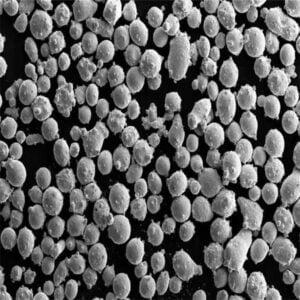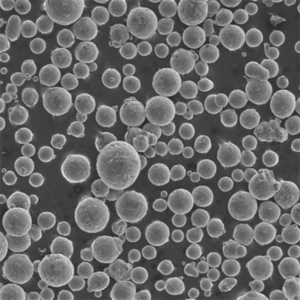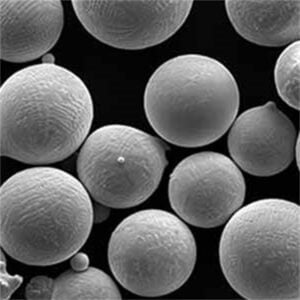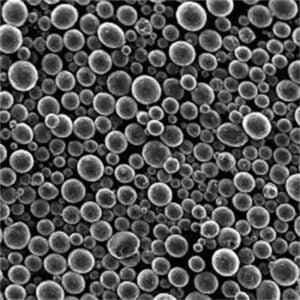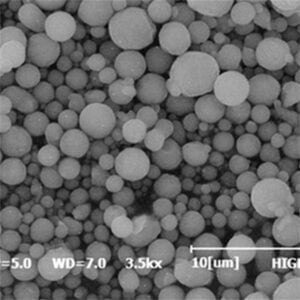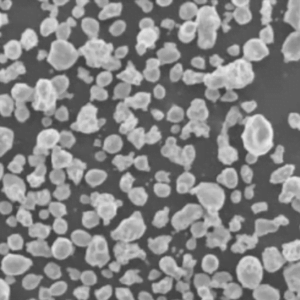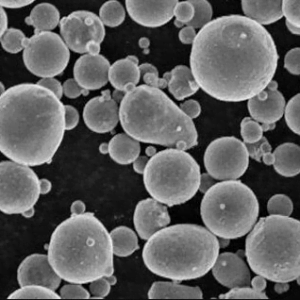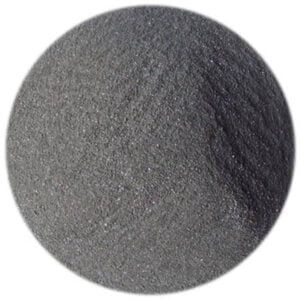ステンレス鋼 17-4PH 2024年パウダー
目次
概要
ステンレス鋼17-4PH粉末は、金属3Dプリントに使用できる析出硬化マルテンサイト系ステンレス鋼です。高い強度と硬度を持ち、耐食性にも優れています。17-4PHは約4%の銅を含み、銅リッチ粒子の析出による合金の時効硬化を可能にします。
本記事では、17-4PH 粉末の組成、特性、加工、用途、サプライヤー、他合金との比較など、17-4PH 粉末の概要を説明します。主な詳細は以下の表にまとめてあります。
17-4PHパウダー組成
17-4PHの名称は、約4%の銅を含む組成に由来する。主な合金元素は以下の通り:
| エレメント | 重量 % |
|---|---|
| クロム | 15 – 17.5% |
| ニッケル | 3 – 5% |
| 銅 | 3 – 5% |
| マンガン | ≤ 1% |
| シリコン | ≤ 1% |
| カーボン | ≤ 0.07% |
| 硫黄とリン | ≤ 0.04% |
| 窒素 | ≤ 0.03% |
銅は析出硬化をもたらし、17-4PHの強度と硬度を大幅に向上させる。クロムは耐食性を提供する。ニッケルも延性と靭性を高めながら耐食性を向上させます。
17-4PHパウダーの特性
17-4PHパウダーは、高強度と優れた耐食性の優れた組み合わせを提供します。主な特性は以下の通り:
| プロパティ | 説明 |
|---|---|
| 強さ | 最大引張強さ1,380 MPa、最大降伏強さ1,240 MPa |
| 硬度 | エージング後、最高44HRC |
| 耐食性 | 銅により400系ステンレス鋼より優れている。 |
| 加工性 | 強度が高いため、300シリーズより加工が難しい。 |
| 磁気 | マルテンサイト組織によりわずかに磁性がある。 |
| 溶接性 | 析出硬化により300系より溶接性が劣る。 |
強度、硬度、耐食性は熱処理によって調整できる。固溶化熱処理は合金を軟らかく延性にする。その後時効処理を施すと、銅を多く含む粒子が析出し、転位の移動を妨げるため、材料が硬化し強化される。
17-4PH加工
17-4PH粉末は、いくつかの金属3Dプリンティング法で加工できる:
- レーザー粉末床融合 (L-PBF)
- 電子ビーム粉末床融合(E-PBF)
- 指向性エネルギー蒸着(DED)
L-PBFは最も一般的なアプローチの一つである。緻密でクラックのない部品を実現し、残留応力を回避するためには、プロセスパラメーターを注意深く制御する必要がある。
L-PBF中の17-4PH粉末の典型的な処理条件:
- 層厚:20~50μm
- レーザー出力: 100-400 W
- スキャン速度: 100-1500 mm/s
- ハッチの間隔80-120 μm
- ビーム径:50~100μm
残留応力を緩和するために、印刷後に応力除去熱処理を行うことを推奨する。印刷された部品は、硬度と強度を高めるために、溶液アニールとエージングを行うことができます。
17-4PH 用途
17-4PHは、様々な産業において、高強度、高硬度、適度な耐食性を必要とする金属3Dプリント部品に使用されています:
- 航空宇宙タービンブレード、インペラ、ファスナー、ブラケット
- 自動車トランスミッション部品、ターボチャージャー部品
- 石油・ガスバルブ、坑口部品、ポンプ
- エンジニアリング全般:工具、治具、金型
時効後の硬度が高いため、17-4PHは耐摩耗用途に適している。17-4PHは、射出成形金型やダイス用の工具鋼のような難削材の代用となる。この合金は一般的に高強度構造用ブラケットやハウジングに使用されます。
17-4PH 粉末 供給者
17-4PH粉末は、大手金属粉末メーカーから市販されている:
| サプライヤー | 製品グレード | サイズ範囲 |
|---|---|---|
| サンドビック | オスプレイ 17-4PH | 15-45 μm |
| カーペンター | 17-4PH | 15-45 μm |
| プラクセア | 17-4 PH | 15-53 μm |
| LPWテクノロジー | 17-4PH | 15-45 μm |
| エラスティール | 17-4 PH | 20-150 μm |
価格は注文数量により$50/lbから$90/lbまで。特注の粒度分布や高純度グレード(リン酸塩不動態化など)も可能です。
17-4PHと他の合金との比較
17-4PHとステンレス鋼および工具鋼合金の比較は以下の通りである:
| 合金 | 強さ | 耐食性 | コメント |
|---|---|---|---|
| 17-4PH | 非常に高い | 中程度 | 析出硬化;高硬度;優れた強度と耐食性の組み合わせ |
| 316L | ミディアム | 素晴らしい | 標準的な耐食ステンレス; 低強度; 熱処理不可; 安価 |
| PH 13-8 | 高い | 素晴らしい | 析出硬化;高強度、耐食性;8%ニッケル含有 |
| H13工具鋼 | 非常に高い | 中程度 | 標準工具鋼:硬度は高いが耐食性は劣る。 |
よくあるご質問
17-4PHステンレスの主な利点は何ですか?
17-4PHの主な利点は、高い強度と硬度、適度な耐食性である。硬度は時効処理により44HRCまで可能である。それは300シリーズステンレス鋼よりも大幅に高い強度を提供しています。
17-4PHステンレスの用途は?
17-4PHの一般的な用途には、ブラケットやハウジングのような構造部品、耐摩耗部品、プラスチック射出成形金型およびダイ、インペラー、バルブ、航空宇宙部品などがある。17-4PHは、航空宇宙、石油・ガス、自動車、一般エンジニアリングに広く使用されている。
なぜ17-4PHが金属3Dプリントに適しているのか?
17-4PHは、熱伝導率と熱膨張率が低いため、印刷時の残留応力やクラックが発生しにくい。硬度が高いため、耐摩耗性工具の印刷が可能です。この合金は一般的に粉末状で入手可能である。
17-4PHにはどのような熱処理が施されていますか?
17-4PHは通常、1038-1066℃で溶体化処理した後、371-427℃で時効処理し、銅リッチ粒子を析出させる。これにより合金は硬化し、大幅に強化される。熱処理前の応力除去を推奨する。
17-4PHと316LやH13工具鋼との比較は?
17-4PHは316Lステンレス鋼よりはるかに高い強度と硬度を持つが、耐食性は低い。H13工具鋼と比較すると、17-4PHは硬度が若干低いものの、耐食性に優れています。17-4PHは硬度、強度、耐食性のバランスが良い。
17-4PHを3Dプリントする場合、どのような注意が必要ですか?
残留応力やクラックを最小限に抑えるためには、プロセスパラメーターの選択と層間の応力緩和を慎重に行うことが重要である。印刷方向、支持構造、解像度/層の高さも、複雑な形状に合わせて最適化する必要があります。
17-4PHパウダーを供給しているサプライヤーは?
17-4PHパウダーの主要サプライヤーには、Sandvik、Carpenter Additive、Praxair、LPW Technology、Erasteelなどがある。粉末は、DEDやL-PBFのようなAMプロセス用にカスタマイズされた異なるサイズ分布で入手可能です。
シェアする
MET3DP Technology Co., LTDは、中国青島に本社を置く積層造形ソリューションのリーディングプロバイダーです。弊社は3Dプリンティング装置と工業用途の高性能金属粉末を専門としています。
関連記事
Met3DPについて
最新情報
製品

3Dプリンティングと積層造形用金属粉末






